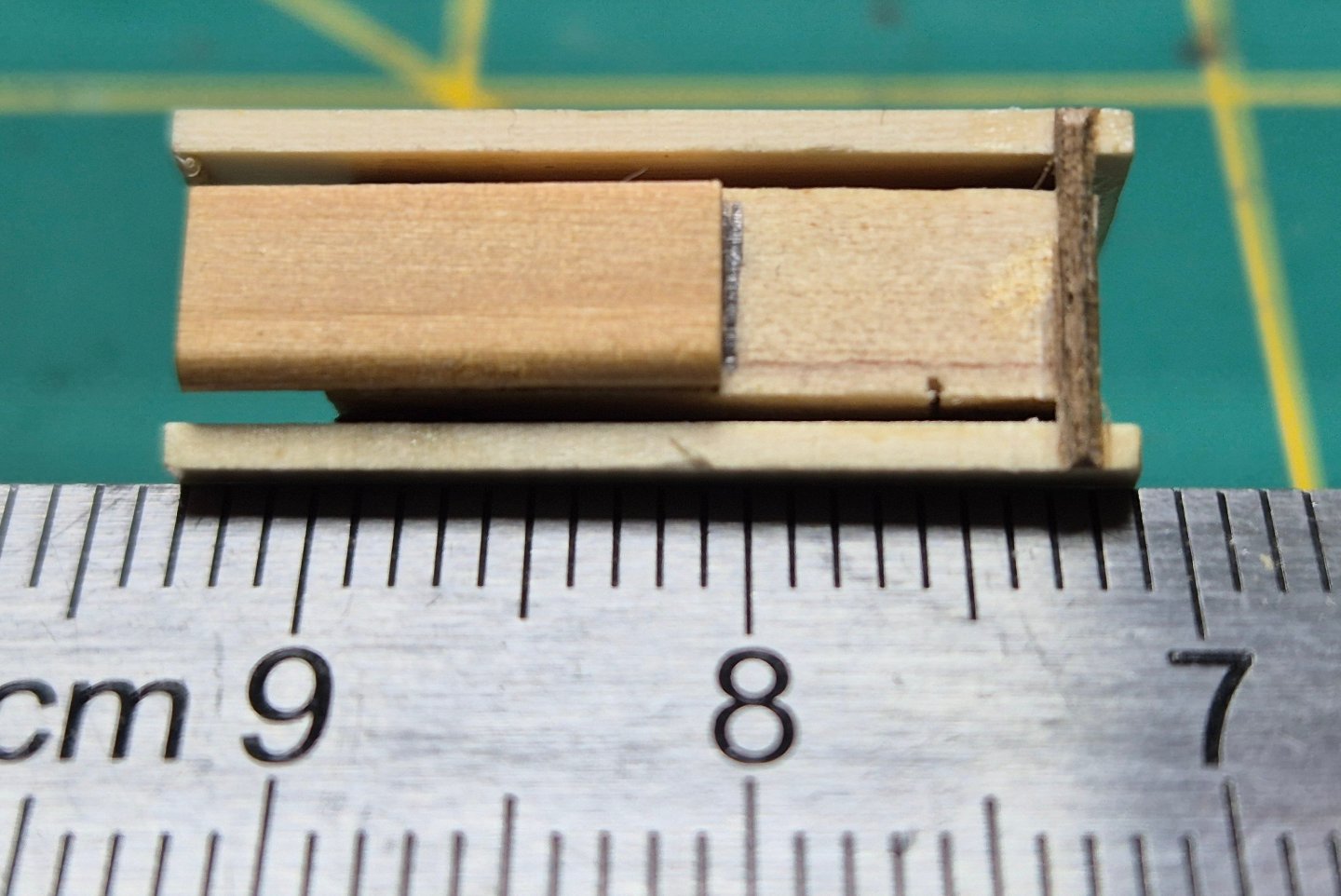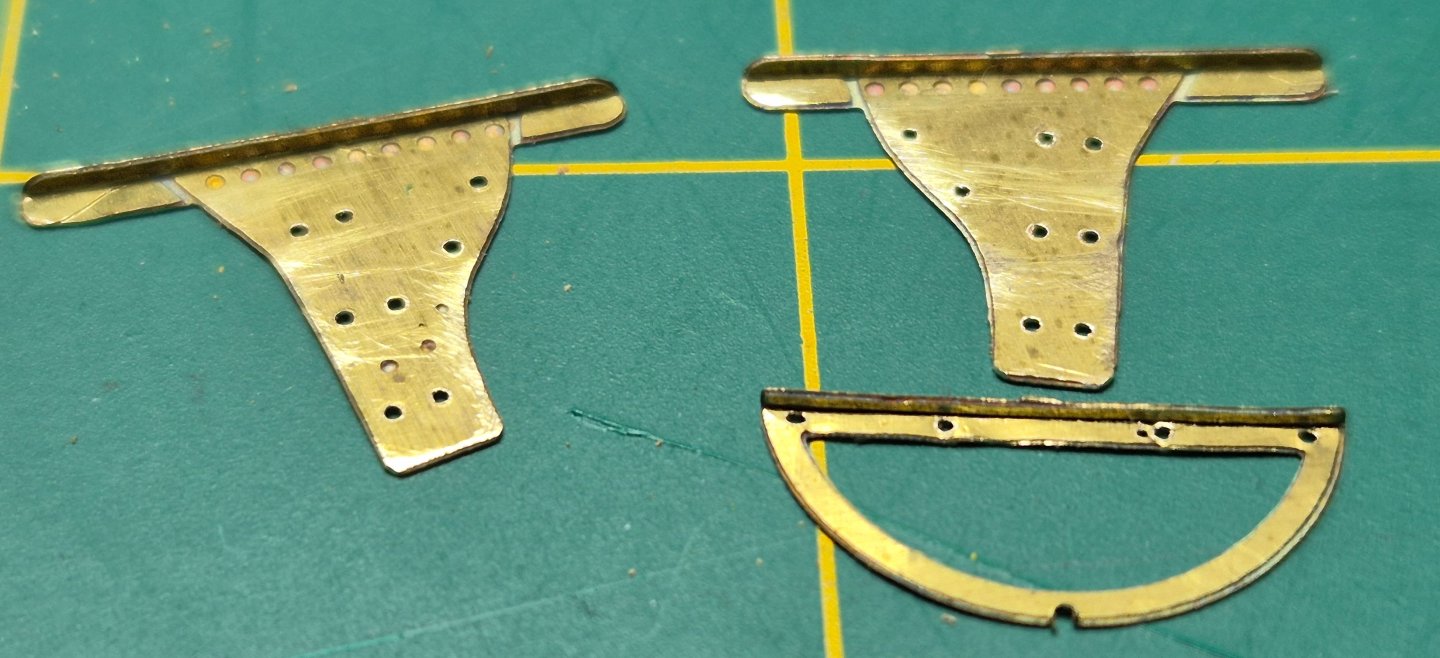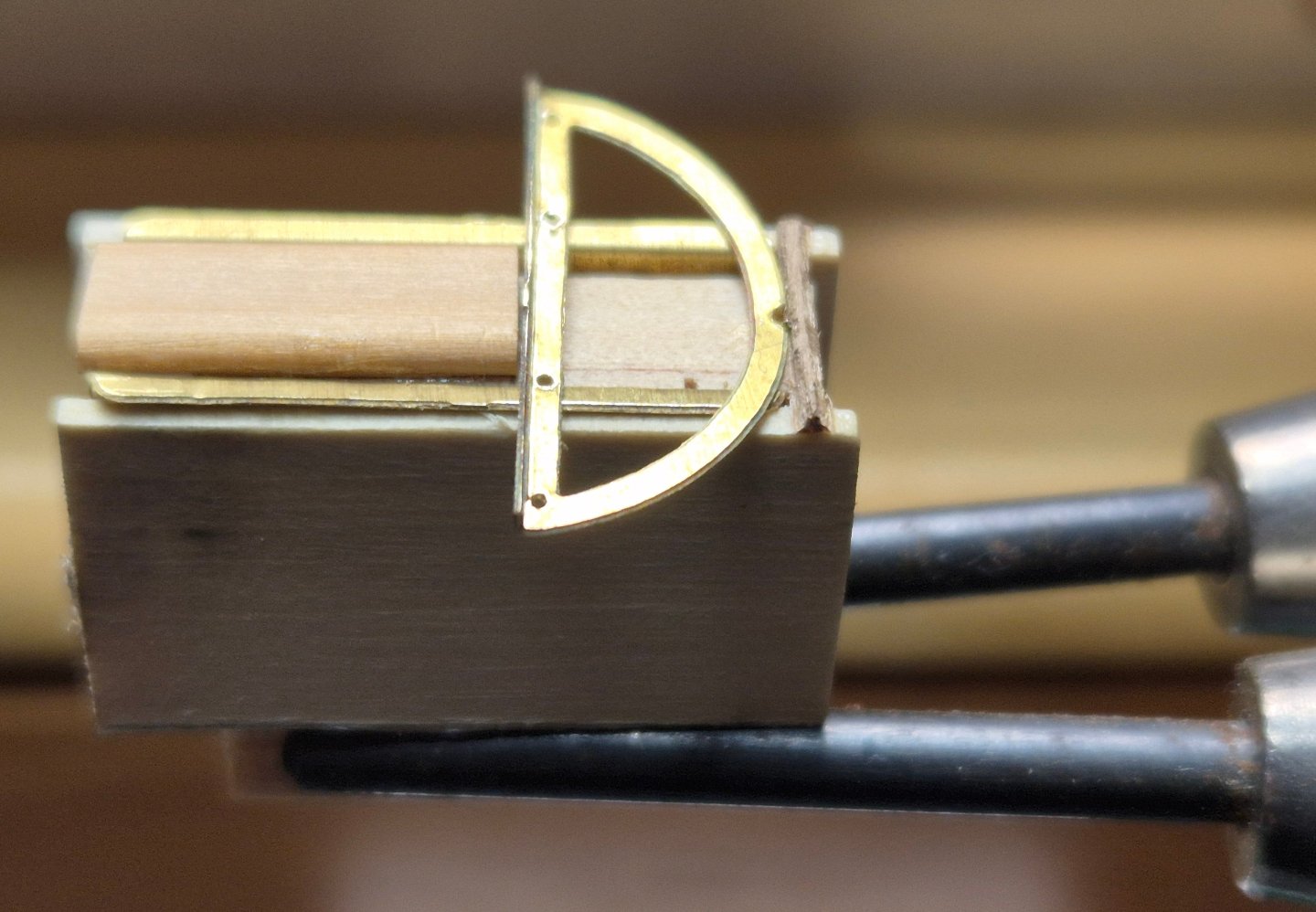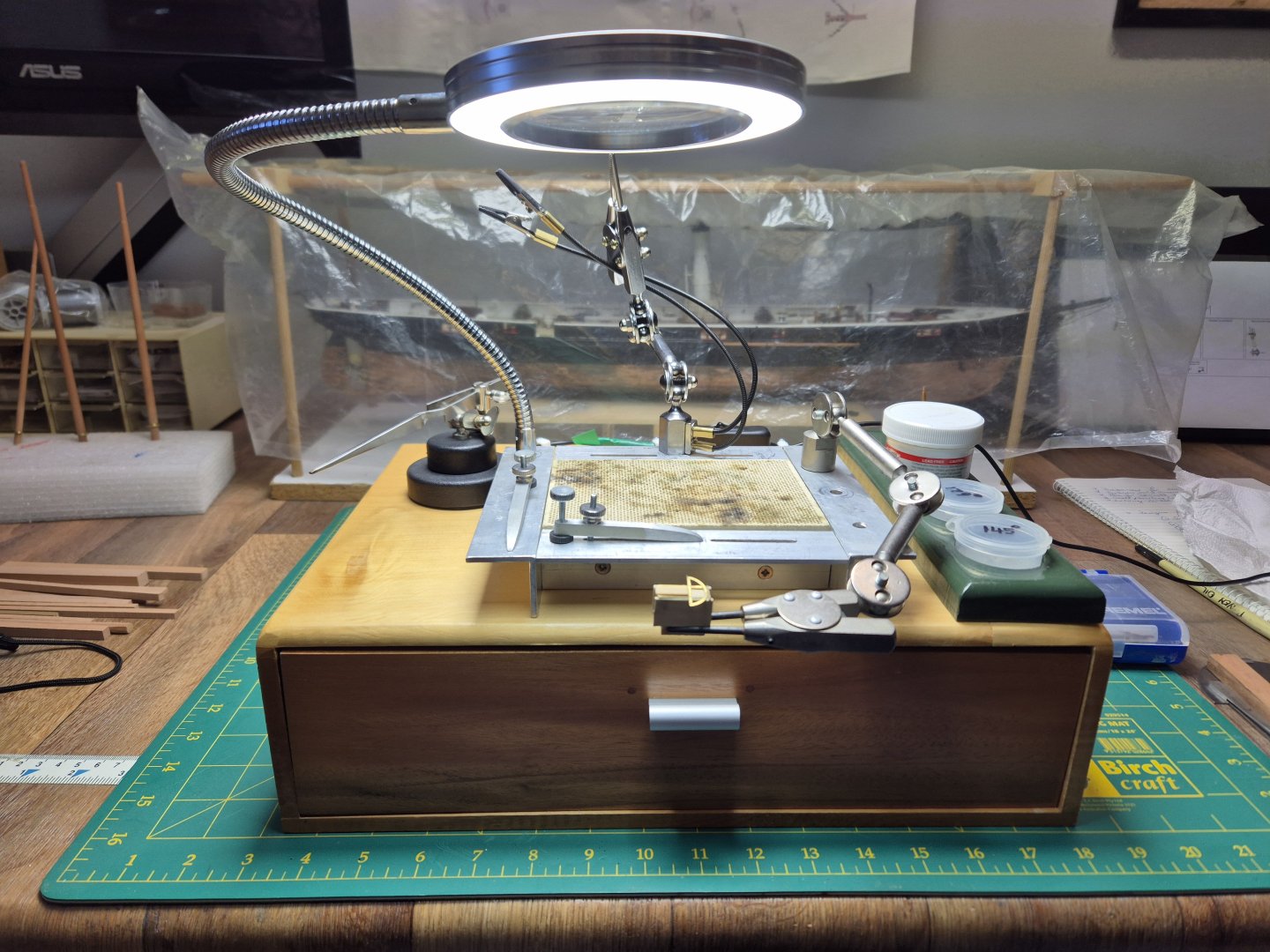-
Posts
5,946 -
Joined
-
Last visited
Content Type
Profiles
Forums
Gallery
Events
Everything posted by BANYAN
-
So fighting fire with fire so to speak Glen? Let's hope it never gets to that point. cheers Pat
- 235 replies
-
- Banshee II
- Bottle
-
(and 1 more)
Tagged with:
-
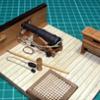
HMCSS Victoria 1855 by BANYAN - 1:72
BANYAN replied to BANYAN's topic in - Build logs for subjects built 1851 - 1900
Thanks @wefalck, @Glen McGuire and @Jim Lad, appreciate the feed back. Eberhard, I did have the same idea but using the actual mast. That is pin and glue the cheeks in place first, but with the very small items I was concerned about keeping the tops of the trestletrees parallel and exactly aligned. This jig at least keeps one of these variables (spacing) under control, and with a bit of care should be able to control the parallel aspect. The central spacer is exactly the width of the masthead BUT, there is a tiny bit of 'slop' in the hound/cheek slots, so I may have to seriously reconsider your idea. Glen one of the three key 'bodging' tools - duct tape, 16 gauge fencing wire and a big hammer. I may have to resort to duct tape if all else fails - then again I could get those pesky penguins to hold it in place if Keith will spare a couple - yeah I know 🤐 John, if I hadn't already made the masts that could have been an serious option to consider; thanks for the idea. cheers Pat- 1,013 replies
-
- gun dispatch vessel
- victoria
-
(and 2 more)
Tagged with:
-

HMCSS Victoria 1855 by BANYAN - 1:72
BANYAN replied to BANYAN's topic in - Build logs for subjects built 1851 - 1900
A little more to report. I have been experimenting to determine the best jig to solder these tiny pieces together. The following show a very rough version of what I think I will try. The principle seems OK but the jig needs a little 'finagling' and then to be remade in a denser wood before I dare attempt any soldering. The brass PE parts have had holes drilled to accept the through mast bolts, but as is obvious, they need a lot more clean-up yet I am open to ideas to modify this jig before committing so please have at it. The general idea is create 2 slots held in place at the width of the masthead flats. The rim, which has yet to have the fore part of the rim soldered to it (see much earlier posts on this) then sits on top of them, and, after centering it, will somehow be held in place so that it does not move - I am still trying to sort that bit. The final shot shows how it will be held in my soldering station when I get around to soldering. Then I have to think about how to put on the crosstrees with the iron rod (brass) stays pre-attached to the cross trees and the futtock band... but, that is a problem for 'future Pat' as the saying goes. cheers Pat- 1,013 replies
-
- gun dispatch vessel
- victoria
-
(and 2 more)
Tagged with:
-
A well dressed (painted) crew you have there Eberhard. You must still have very steady hands to achieve this level (quality) of work. cheers Pat
-
Keith would probably suggest a Penguin sitting on the lip of the funnel steaming its 'hot dog' in the waste steam cheers pat
- 235 replies
-
- Banshee II
- Bottle
-
(and 1 more)
Tagged with:
-
She's coming on splendidly Ian, looking great! Some very neat lashing there, bodes well for your rigging to which I am ;looking forward to seeing. cheers Pat
- 536 replies
-
- Quadrireme
- radio
-
(and 1 more)
Tagged with:
-
Hi Glen, great progress and a joy to follow along mate. If not too late, what you describe as a 'spine' to the rear of the smoke stack (funnel) is actually a separate pipe with a slightly flared top which was a steam release pipe associated with the safety valve on the boilers. See attached. At your scale though this would be difficult to create (although some brass wire/rod may do the job), and as I said earlier, maybe a little late to change even if you wanted to. cheers Pat
- 235 replies
-
- Banshee II
- Bottle
-
(and 1 more)
Tagged with:
-
Hi Rob, are you hinting this is your last model? cheers Pat
- 3,560 replies
-
- clipper
- hull model
-
(and 2 more)
Tagged with:
-
Thanks for the feedback Glen. I find the way you sort out these 'puzzles' is of great interest to me (being a non-SIB builder). Have fun reading the book, looks interesting. cheers Pat
- 235 replies
-
- Banshee II
- Bottle
-
(and 1 more)
Tagged with:
-
Those images prove the high degree of your excellent research and skills Rob. Hard to tell/find any differences. cheers Pat
- 3,560 replies
-
- clipper
- hull model
-
(and 2 more)
Tagged with:
-
Stunning progress Glen, she is looking great. Hopefully you will be able to maneuver the assembly into position without much of a problem. I am assuming the fore-funnel will not be placed until then? Cheers Pat
- 235 replies
-
- Banshee II
- Bottle
-
(and 1 more)
Tagged with:
-
My thoughts and wishes are with you on your new journey Keith. I hope you find something that suits all of your needs (both Maggie and yours). I too dread the day I have to start thinking of this eventuality. regards Pat
-

HMCSS Victoria 1855 by BANYAN - 1:72
BANYAN replied to BANYAN's topic in - Build logs for subjects built 1851 - 1900
Thanks Druxey, me too. Appreciate the thoughts. cheers Pat- 1,013 replies
-
- gun dispatch vessel
- victoria
-
(and 2 more)
Tagged with:
-

HMCSS Victoria 1855 by BANYAN - 1:72
BANYAN replied to BANYAN's topic in - Build logs for subjects built 1851 - 1900
Thanks for looking Rob and Druxey, and again Keith and Eberhard. Always value the comments and advice from you guys. Thanks for asking Rob. I am still suffering the 'old fella' shakes (which are slowly getting worse) but the doc is trying me out with different 'beta blockers' which give temporary respite allowing me some time at the bench. Apart from that, I cannot complain about life. Grandkids are keeping me busy and active. Eberhard, I would have to agree re the single roller except where a true flat in the y plane was not necessary, but that would be a rare thing I would say. Keith, don't we all I think I also need the additional bracing of a good 'girdle' Not sure about that 'relief' though cheers Pat- 1,013 replies
-
- gun dispatch vessel
- victoria
-
(and 2 more)
Tagged with:
-
Chuck, I cannot recall where I read this, but during my research I came across a comment that some vessels used internal piping as long as there was gravity to assist drainage. Other ships used a vertical drop to where the pipe exited but only protruded a few inches and then had a canvas (or rubber in later ships) hose fitted, but this seems a very weak connection to me. It would not have taken much of a seaway to break it off; perhaps the flexible pipe was only while in port? If I can find the reference again I will pass it on. cheers Pat
-
Hi, if furling your sails this would typically indicate a ship in harbour rather than at sea (unless only some sails were furled and others set - in use). As such your proposed arrangement would be very unusual I think, well for square sails at least. Normally, in harbour, the square sail yards were shown in their lowered position and arranged horizontally athwartship. cheers Pat
-

HMCSS Victoria 1855 by BANYAN - 1:72
BANYAN replied to BANYAN's topic in - Build logs for subjects built 1851 - 1900
Thanks, John, Eberhard, Steven, Glen and Keith (A and B). Appreciate the generous feedback guys. I'll continue on with these as I contemplate the jig for putting the tops together. I need to make the futtock/truss band and futtock rods before that though. The rods will help support the crosstrees which are only 1mm wide and about 0.2mm thick - the slightest knock (or heavy breath) will bend them so will need the support of the rods immediately after the top is fitted. WRT the crosstrees, the real deal had roller fairleads in them but that is impossible at this scale, so I am simply going to drill a hole and bend the upper ends of the futtocks rods to fit them, then solder in p[lace. This at least will give some added strength to them while I am rigging the upper masts. cheers Pat- 1,013 replies
-
- gun dispatch vessel
- victoria
-
(and 2 more)
Tagged with:
-
I am sure you can pull that idea off Keith. I think there are some very small camera fittings that are 3D printed. If I come across them again I'll get back to you (only if they are period correct). cheers Pat
-
You should be pleased Glen, they turned out a treat. cheers Pat
- 235 replies
-
- Banshee II
- Bottle
-
(and 1 more)
Tagged with:
-

HMCSS Victoria 1855 by BANYAN - 1:72
BANYAN replied to BANYAN's topic in - Build logs for subjects built 1851 - 1900
Hi again folks, back at the bench having caught up with the chores, and finding a temporary solution for the 'old fella' shakes - Beta Blockers. These have a limited effect but enough to allow me to do a few things. I have started back on the masts and their furniture. The following shows me making the second of the top masts (still have the mizen to go). These are a combined stick or pole mast where the top, top gallant and royal masts are all in one. I cheat and turn these up in the lathe, using files and sanding sticks. I support where the various steps (shoulders) are cut to delineate the masts with a 'jack'. Not visible is a shallow 'v' groove but I cannot put much pressure on this as the mast is tapered and therefore not fully supported across the saddle - I really need to make a small saddle piece for this jack. The other photos show my approach for filing the flats on each side of the tapered lower mast in which the hounds/cheeks (iron) sit. The process is to gently hold the mast in the jaws of my indexing head (for a Sherline mill), then line up the end of the inset/flat with the end guide of my filing guide. Adjusting the height is very finicky but I got there, and now that it is set-up I can do both flats exactly to the same depth, length and 180 opposed. It took a while for me to sort how I was going to do this, but this worked. One learning point though is that I will need to better protect the mast in the jaws. I ended up with a very small mark but nothing significant. The hardened rollers allow me to get an even flat surface to the depth set (manually) while the roller lugs act as an end stop. Even though manually adjusted I lucked out and got it about right. Now that the flats are done, I can determine the exact width the trestle trees need to be apart so that I can build a jig to solder them to the formed rim part (fore crosstree plus rim). I will show that soon. The brass (photoetched) hounds were designed with the trestle tree attached (with a fold line) which I have done. This is a test piece which has not been cleaned up yet. I will also drill out the bolt holes and use simulated bolt heads and nuts in a staggered/alternating pattern when fitting to the mast. the idea of the flats was to ensure the hounds (cheeks) and trestletree remained perpendicular to the mast centerline axis rather than sloping inwards. The fore-and-aft angle will also need to be adjusted to ensure the trestle trees remain parallel with the deck/waterline when fitted. cheers Pat- 1,013 replies
-
- gun dispatch vessel
- victoria
-
(and 2 more)
Tagged with:
-
Hi Glen, those paddle wheel covers came up a treat, the slots are particularly nicely done/defined. cheers Pat
- 235 replies
-
- Banshee II
- Bottle
-
(and 1 more)
Tagged with:
-
Difficult? Bah! I am sure you will find a solution Glen - these issue just add to a greater sense of fulfilment on completion later (easy for me to say). Looking forward to your problem solving on this one; if it was me I would just cut the bottom of the bottle, fit the hull etc. then glue it back on - but that is why you are a master of this artform, no shortcuts for you. cheers Pat
- 235 replies
-
- Banshee II
- Bottle
-
(and 1 more)
Tagged with:
About us
Modelshipworld - Advancing Ship Modeling through Research
SSL Secured
Your security is important for us so this Website is SSL-Secured
NRG Mailing Address
Nautical Research Guild
237 South Lincoln Street
Westmont IL, 60559-1917
Model Ship World ® and the MSW logo are Registered Trademarks, and belong to the Nautical Research Guild (United States Patent and Trademark Office: No. 6,929,264 & No. 6,929,274, registered Dec. 20, 2022)
Helpful Links
About the NRG
If you enjoy building ship models that are historically accurate as well as beautiful, then The Nautical Research Guild (NRG) is just right for you.
The Guild is a non-profit educational organization whose mission is to “Advance Ship Modeling Through Research”. We provide support to our members in their efforts to raise the quality of their model ships.
The Nautical Research Guild has published our world-renowned quarterly magazine, The Nautical Research Journal, since 1955. The pages of the Journal are full of articles by accomplished ship modelers who show you how they create those exquisite details on their models, and by maritime historians who show you the correct details to build. The Journal is available in both print and digital editions. Go to the NRG web site (www.thenrg.org) to download a complimentary digital copy of the Journal. The NRG also publishes plan sets, books and compilations of back issues of the Journal and the former Ships in Scale and Model Ship Builder magazines.




